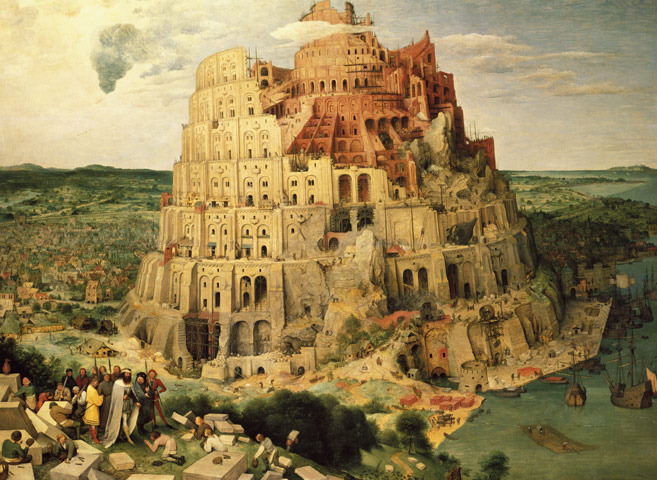Fr : version française / En: english version
mheu, Historical Museum of the Urban Environment
Tower of Babel
Pieter Brueghel the Elder

1563
114cm X 155cm
Kunsthistorisches Museum, Vienna, Austria
© BPK, Berlin, Dist RMN
View this work in the exhibition Babel to Dubai: Urban Utopias
The work
The Tower of Babel inspired a number of artists. Brueghel the Elder chose to portray the tower's construction rather than its divine destruction. During a time of religious upheaval, this was perhaps an attempt to promote the universality of man.
Brueghel was a great humanist and keenly aware of the technical advances of his time—knowledge he used to accurately portray the details of the latest building techniques.
The artist
Not much is known about Pieter Brueghel "The Elder", not even his exact date of birth, which has been estimated circa 1525-1530. However, we do know that he died in 1569. The death certificate states that he died medio aetatis flore (in the prime of his life); he is therefore thought to have lived until around 40 years of age.
Nor do we know where he was born: Breda in the Netherlands or Bree in Belgian Limburg (also called Breda in Latin). His name first appears in 1551 in Antwerp, where he ranked among the masters of the guild of Saint Luke. The following year, he traveled to Italy. It is thought that he rubbed shoulders with both rich patrons and rural folk, whose weddings he attended.
In 1562, he left Antwerp and set up home in Brussels, where he married the daughter of the painter Pieter Coecke van Aelst in 1563. Some stories suggest the latter was also his mentor.
His first son, Pieter Brueghel "The Younger", was born in 1564, and the second, Jan de Velours, in 1568, both of whom took up as painters and continued to promote the Brueghel style after their father's death in 1569—a style that remained highly popular throughout the 16th century.